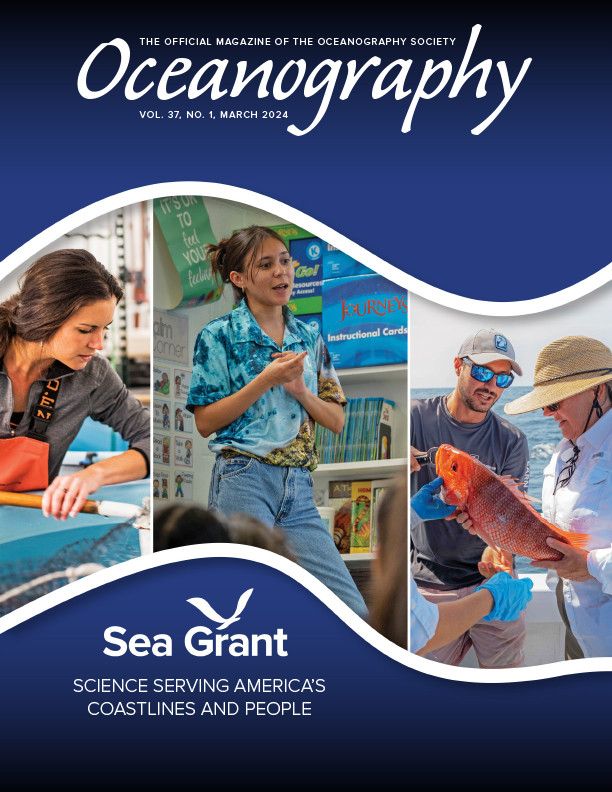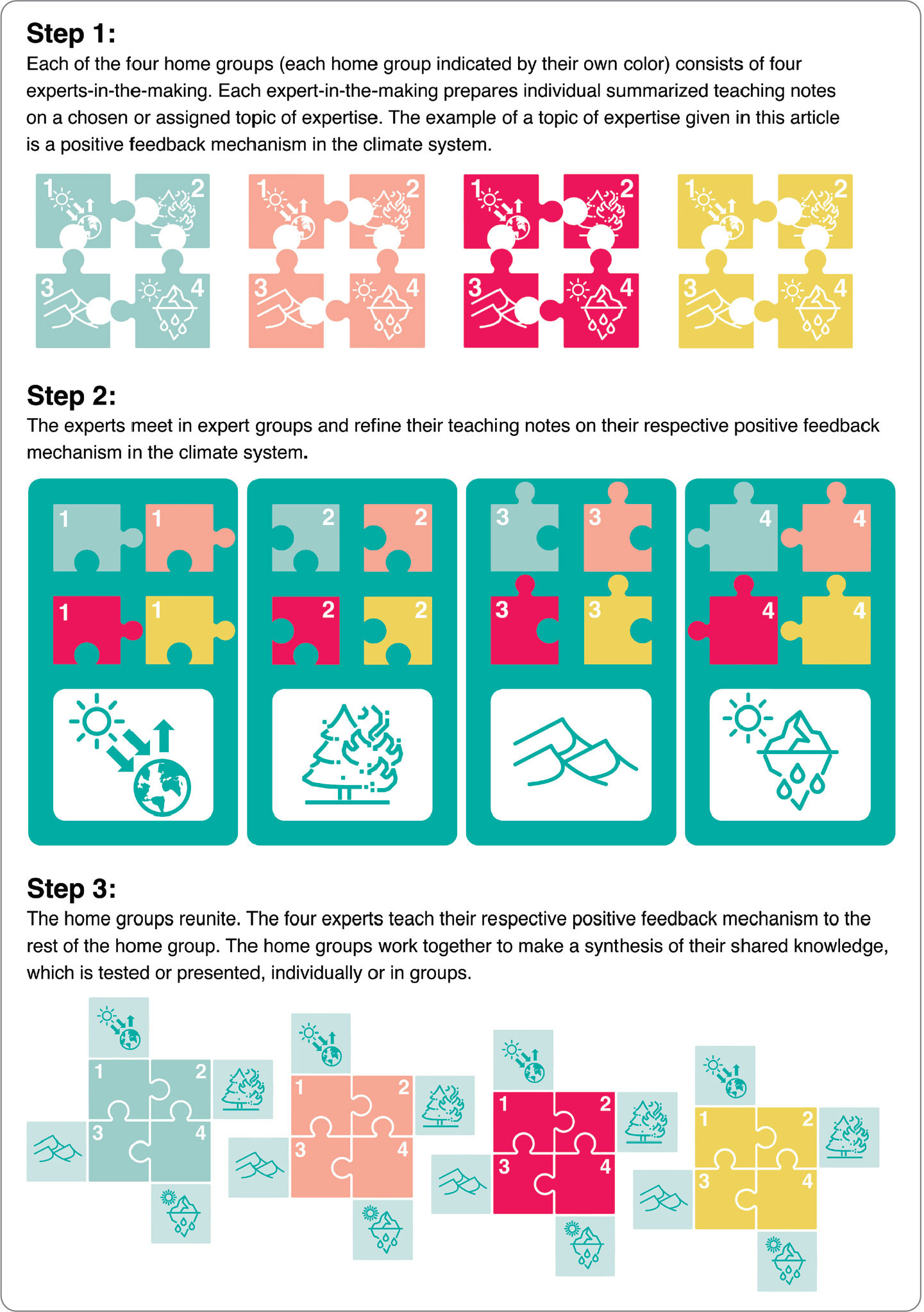Full Text
The challenges of recruitment, retention, and learning outcomes in STEM higher education call for learning environments that promote student belonging and belief in their own abilities (Møgelvang, 2023). Cooperative learning (CL) is a type of group learning associated with increased learning and more “soft” student outcomes such as increased sense of belonging, scientific confidence, and generic skills (Møgelvang et al., 2023). CL may be defined as “a more-structured, hence more-focused, form of collaborative learning” (Millis and Cottell, 1997, p. 4). This structured approach is research based and is considered to increase the probability that all students are successful at group work (Millis and Cottell, 1997).
According to the CL literature, the key to successful group work comprises two principles: positive interdependence and individual accountability. Positive interdependence is achieved by structuring the learning environment, groups, and group tasks in ways that make group members dependent on each other and create a common interest in co-working to successfully complete the task. Individual accountability promotes responsibility and prevents free-riding behavior, and is achieved when group members are held accountable for learning the material and completing the group task (Millis and Cottell, 1997; Ballantine and McCourt Larres, 2007). Strategies that oceanography educators may implement to ensure that these two principles guide group learning include teaching transparency, group features, and CL structures.
Teaching Transparency
When incorporating CL into teaching, educators need to acknowledge that many students may have negative experiences with group work (Millis and Cottell, 1997). Although group work is difficult, learning to cooperate is vital. Making students aware of and letting them discuss positive outcomes of group work, both for them as individuals and for society at large, can open their minds to new and positive experiences with group work. Further, being transparent about one’s own conscious and research-based approaches to ensure successful groups and group work signal both competence and willingness to counteract negative group work experiences. Sharing teaching practices with students fosters mutual confidence and may motivate students to take responsibility for the success of the groups and group work in which they are involved. Making students co-responsible creates ownership and is an important part of co-creation—when students work together with their teachers to create the learning framework (Glessmer and Daae, 2021).
Group Features
Group features that underpin positive interdependence and individual accountability include group size, composition, and duration. Ideally, groups should be between three and five students, and most seem to prefer groups of four. When students work in small groups, free-riding behavior might be avoided, and less forthright students can express their opinions. In groups of four, it is easy to pair up, and even if a person is missing, the group is still technically a group (Millis and Cottell, 1997). Heterogeneous group formation is another important feature. Diversity of opinion and experiences may create cognitive disequilibrium and force the students to take different perspectives, argue their cases, and widen their horizons. Thus, groups should be formed by the teacher based on heterogeneous principles, for example, different academic ability, background, age, and gender. Finally, it is essential to consider group duration. Research shows that when groups last at least a month, group members become increasingly and positively dependent on each other, and it becomes increasingly difficult to not contribute (Møgelvang, 2023).
CL Structures
Cooperative learning structures prescribe group tasks to ensure that positive interdependence and individual accountability occur. Highly structured group tasks help students understand how they are to work together, take responsibility, and help each other learn. There are many popular CL structures to explore (Millis and Cottell, 1997; Box 1). The CL structure elaborated on here is called jigsaw and is one of the most successful CL structures in STEM to improve both learning and soft outcomes (Costouros, 2020; Møgelvang et al., 2023). In jigsaw, group members teach each other and work in two groups: “home groups” and “expert groups.” Typically, the home groups are the groups that the students normally belong to (as described under Group Features), whereas the expert groups are limited to one occurrence. In home groups, each group member chooses or is assigned a topic of expertise, that is, a specific part (piece) of a complex whole (jigsaw puzzle). Depending on topic complexity, the students are given a certain number of minutes to prepare summarized teaching notes on the key points relating to their topic (Step 1, Figure 1). Then, each group member joins an expert group consisting of students with the same topic and participates in refining the teaching notes by agreeing on what is most important (Step 2, Figure 1). Upon returning to the home group, the expert then presents the topic to the rest of the home group members, and the home group puts all of the pieces of the puzzle together (Step 3, Figure 1). When assembling the puzzle, the home group should reflect on how the different pieces of the puzzle make up a whole, for example, by comparing the pieces—or theorizing about how the pieces interact to increase or decrease a phenomenon. To consolidate the learning outcome and underpin the two CL principles, the jigsaw should culminate in some type of testing or presentation, either in groups or individually.
|
|
|
Jigsaws in Oceanography
Many topics lend themselves to jigsaws in oceanography, and the method is scalable depending on the number of students and divisible topics in a course. Figure 1 shows an example of how students in groups of four can work with positive feedback mechanisms in the climate system. In this jigsaw, the students enter expert groups individually to learn to teach about a selected mechanism, for example, ice-albedo feedback, forest fires, desertification, and Arctic methane release (thawing permafrost). Upon returning to the home group, each student teaches the expertise gained to the rest of the group. Then, together, the group members compare the mechanisms and reflect on how they may interact to increase global warming. Lastly, the group or individual group members present their common findings.
An example of a jigsaw for groups of three students is types of long waves. In this jigsaw, each student becomes an expert in Kelvin waves, Rossby waves, or tsunami waves. After teaching the waves to the others in their home group, the group can compare the generation mechanisms, restoring forces, wavelength, period, and propagation. Finally, the group or individual group members can gather all their knowledge into a presentation of optional format. As this task is less complex in content, the students can spend more time on a presentation format, challenging their digital or communication skills. Allowing students to choose their presentation format is a co-creation strategy that may increase motivation (Glessmer and Daae, 2021).
Practical Considerations
Depending on time, students can either prepare their individual summarized teaching notes on their chosen/assigned topic before class or do it in the home groups in class. Time management ensures focus and flow, both in expert and home groups. Thus, indicating time frames for summarizing teaching notes and additional tasks is a good idea. The tasks should be clear enough that the groups can manage on their own, but the instructor should float among the groups to ensure that group processes and products serve the purpose of the jigsaw.
Jigsaws may be used in both digital and traditional settings. Generally, digital jigsaws require a little more preparation, especially in large courses. For example, educators would need to know which students become experts in what topic to create the expert groups in advance (e.g., by uploading spreadsheet lists for breakout groups in Zoom). However, considering the positive effect of jigsaws on soft outcomes in digital settings (Møgelvang et al., 2023), it may be worth the extra preparation. In traditional jigsaws, the educator’s preparation is limited to the topic/tasks/tests and guidelines/criteria for the presentations. Creating expert groups is easily done at the beginning of a class by simply letting the students choose their fields of expertise right then and there. Alternatively, already appointed experts can show hands and either gather in expert groups on their own or educators can assign them to expert groups by giving them numbers.
In sum, jigsaws are easily implemented and may be used in an array of areas. Together with teaching transparency and group features, they make up a conscious and research-based approach to cooperative learning in oceanography. Why not try it out?


